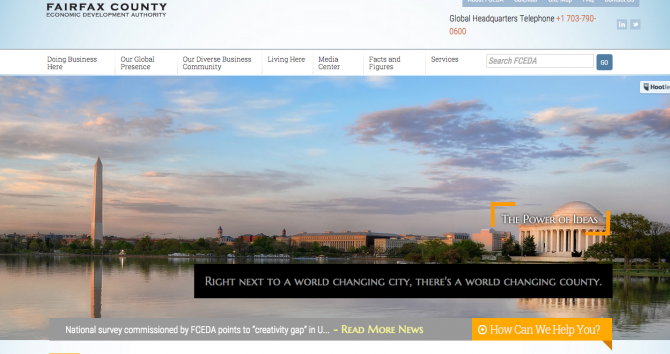With Kirk Heffelmire
“Right next to a world changing city, there’s a world changing county” is one of the powerful lines in Fairfax County Economic Development Authority‘s latest campaign. I’d only add one thing: “right at the heart of a world changing community, there is always a world changing university”.
Competitiveness in the 21st century is driven by human talent, innovation and environments that are conducive to and supportive of entrepreneurial activity. And it turns out, research universities are the most powerful institutions we have to support all of the above.
Universities often calculate the economic impact they have on their communities by adding up economic transactions, investment and jobs. A 2013 report by our Center for Regional Analysis estimated a FY2012 impact of George Mason University in the Virginia economy of $1.56 billion and 16 thousand jobs. Yet, as important and impressive as this may be, it only captures the tip of the proverbial iceberg. The true economic impact of a university in its community is measured by how it contributes to the foundation of the future economic vitality of its region.
A recent book edited by SUNY professors Jason E. Lane and D. Bruce Johnstone sums up several of the ways in which universities contribute to economic growth and health:
- Universities produce skilled workers to enter high-value positions in the knowledge economy, as well as assist current workers with skill development
- Universities act as anchor institutions offering a source of stable employment and local purchasing
- Universities are important sites of intellectual and cultural activity creating a magnet for community participation and development
- Universities attract students from around the world creating enduring links for collaboration and trade, as well as earning valuable export revenue
- Universities act as an important link between business and government for research and development. For example, universities played a central role supporting the most productive and innovative clusters in the country: Silicon Valley, the North Carolina research triangle, and the Route 128 corridor near Boston
- Higher education is an important component in models of competitiveness such as the World Economic Forum’s and there is a clear correlation between national competitiveness and top ranked universities, as seen in our own chart below
Sources: World Economic Global Competitiveness Scores, Academic Ranking of World Universities, and United Nations World Populations.
Measuring the exact dollar value of the economic impact a particular university is difficult. But the complexity of the assessment should not overshadow the tangible, even if not fully quantifiable public benefits of education and research at a time when both are central drivers of economic and social prosperity. This is why public investment in higher education is so crucial to our future. And it is an idea central to our mission statement:
A public, comprehensive, research university established by the Commonwealth of Virginia in the National Capital Region, we are an innovative and inclusive academic community committed to creating a more just, free, and prosperous world


